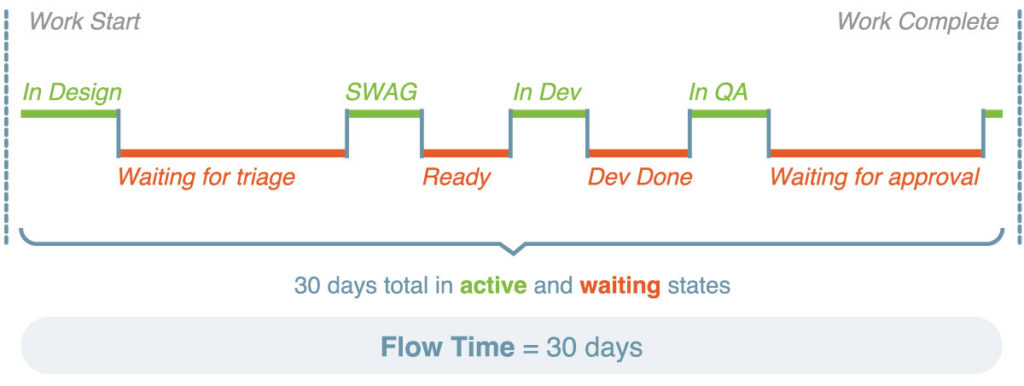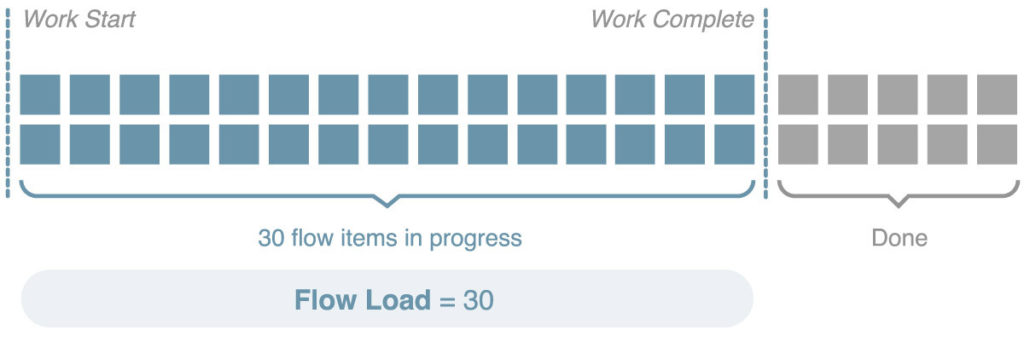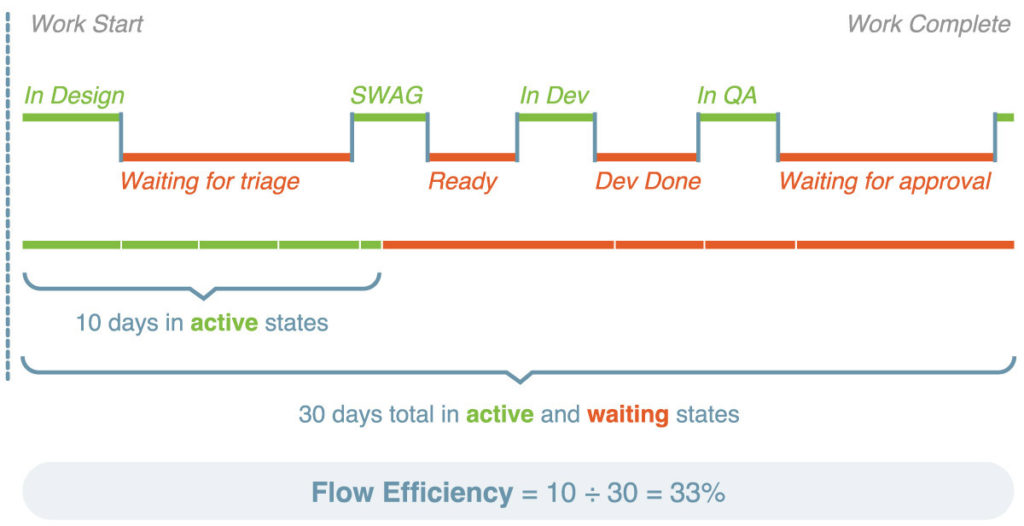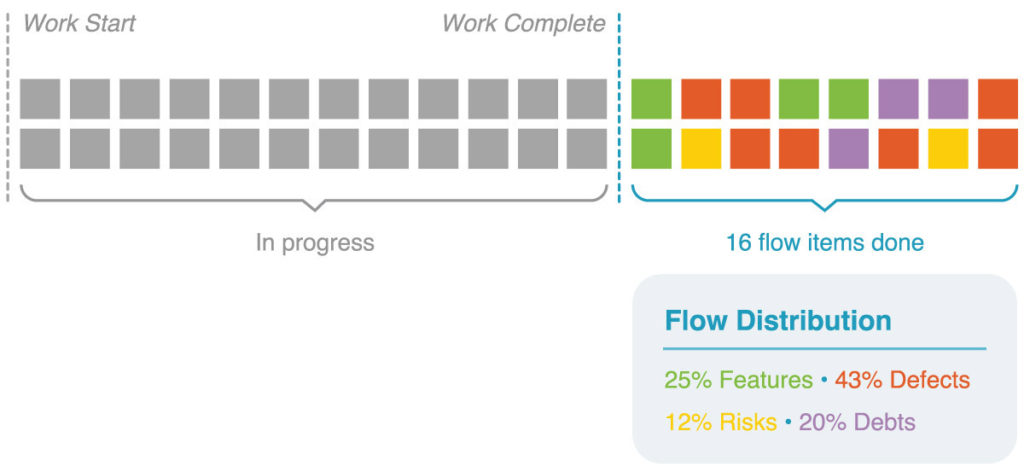
PI Planning in Agile is often held quarterly, bringing together multidisciplinary teams to lay out the product delivery cadence. When scaling agility to your whole organization, it’s important to have an overarching cadence to keep teams in sync. In the Scaled Agile Framework® (SAFe®), time is divided into Program Increments (PIs) to provide structure while maintaining agility.
Success depends in large part on being able to define, measure, and track deliverables during each stage of the cadence. The right metrics must be selected to accurately measure value delivery and the efficiency of PI Planning. Flow Metrics are increasingly being adopted across industries to achieve this goal.
In this article, we take a look at the major challenges inherent to PI Planning in Agile and how Flow Metrics play a major role in addressing them.
What is PI Planning in Agile?
SAFe defines a PI as “a fixed timebox for planning, building, and validating a full system increment, demonstrating value, and getting fast feedback.” A PI is usually 8-12 weeks long and subdivided into several two-week iterations.
PI Planning sessions are regularly scheduled events held throughout the year where multiple teams within the same Agile Release Train (ART) meet to align to a shared vision, discuss features, and identify cross-team dependencies. All teams working on the ART follow the same PI cadence, designed to foster alignment, limit work-in-progress (WIP), and create fast feedback loops.
In the old days, most communication between teams usually occurred in response to addressing critical problems once they became identified rather than having pre-emptive conversations to avoid those problems from happening in the first place. PI Planning in Agile forces companies to get their teams together and talk to one another.
This is extremely important as it allows managers to identify impacted teams and bottlenecks before action is taken. It also helps teams identify which critical up-front work needs to begin or be completed before another team can start to work on their tasks.
Challenges to Efficient PI Planning in Agile
With groups of over 100 people planning together in a single coordinated event, things can get pretty complex, pretty quickly. One of the biggest challenges teams face during PI Planning in Agile is determining and agreeing on priorities.
Changing market conditions often require teams to course-correct during the planning phase. A macro-view of the entire cadence should be considered, with the following questions asked:
- With each PI, are we delivering the right mix of work?
- Is the time-to-market getting shorter?
- Is the quality improving?
- Are our teams actively engaged or reverting to old ways?
- Do we have visibility into upstream and downstream bottlenecks?
To definitively answer these questions, SAFe 5.1 recommends measuring value delivery using the Flow Metrics from Dr. Mik Kersten’s Flow Framework®. When Flow Metrics are woven into the ceremonies and roles of SAFe, enterprises can effectively shorten time-to-market, reduce waste, adhere to Lean-Agile best practices, and prioritize work that drives business outcomes.
Why Flow Metrics Are Important to PI Planning in Agile
Many organizations measure team or individual performance using activity metrics like lines of code written or deploys per day. Unfortunately, these metrics tend to incentivize teams to keep busy rather than focus on the work that positively impacts customers and the business. Additionally, individual output is incentivized over joint team accountability for outcomes.
Flow Metrics, on the other hand, are explicitly tied to business outcomes. They measure how much value is delivered in each PI Planning iteration to ensure agility is attained and sustained. Not just for the Agile team’s portion, but for the whole end-to-end connected value stream.
The 5 key Flow Metrics for effective PI Planning in Agile are:
- Flow Velocity®
- Flow Time
- Flow Load®
- Flow Efficiency®
- Flow Distribution®
Flow Velocity
Flow Velocity measures productivity by showing how many Flow Items of each type were completed over a particular time period. It is a throughput measure that helps you understand the rate of value delivery over time.

Flow Time
Flow Time measures time to delivery by tracking the total time from work start to work complete, including both active and wait states. It helps you understand your actual time-to-market and inform your delivery date commitments. Flow Time starts when a commitment has been made and ends when the value is delivered.

Flow Load
Flow Load measures work in progress (WIP) by showing the number of Flow Items being actively worked on in a product value stream. It includes all Flow Items in either an ‘active’ or ‘waiting’ state. In PI Planning, Flow Load is the single largest predictor of Flow Velocity and Flow Time. Excessive Flow Load is correlated to inefficiency. By analyzing how Flow Load, Flow Velocity, and Flow Time interact with one another, you can identify the ideal WIP limits for your product value stream.

Flow Efficiency
Flow Efficiency is a measure of waste in a product value stream. It tracks the ratio of active time versus wait time out of the total Flow Time. Software industry analysis reveals typical efficiency levels to be around 5-15% (compared to an ideal Flow Efficiency of 30-40%).

Flow Distribution
Flow Distribution measures the distribution of Flow Items (features, defects, risks, and debt) completed over a particular time period. It helps quantify where the majority of effort is going and whether the right type of work is being prioritized. Every value stream should target a healthy mix of the Flow Items over the course of a year, but the distribution will likely change from PI to PI.

Plan on Using Flow Metrics in Your Next PI Cadence
Efficient PI Planning sets the tone for the overall success of the project delivery cycle. For those practicing SAFe, the inclusion of Flow Metrics is essential to build flexible, scalable foundations for future-ready industries. You can download the How to Use Flow Metrics in the SAFe Cadence eBook for a deeper dive on how to best apply Flow Metrics to your PI Planning cadence, or head over to our website to learn additional best practices and get advice from industry experts on how to be successful when PI Planning in Agile.




